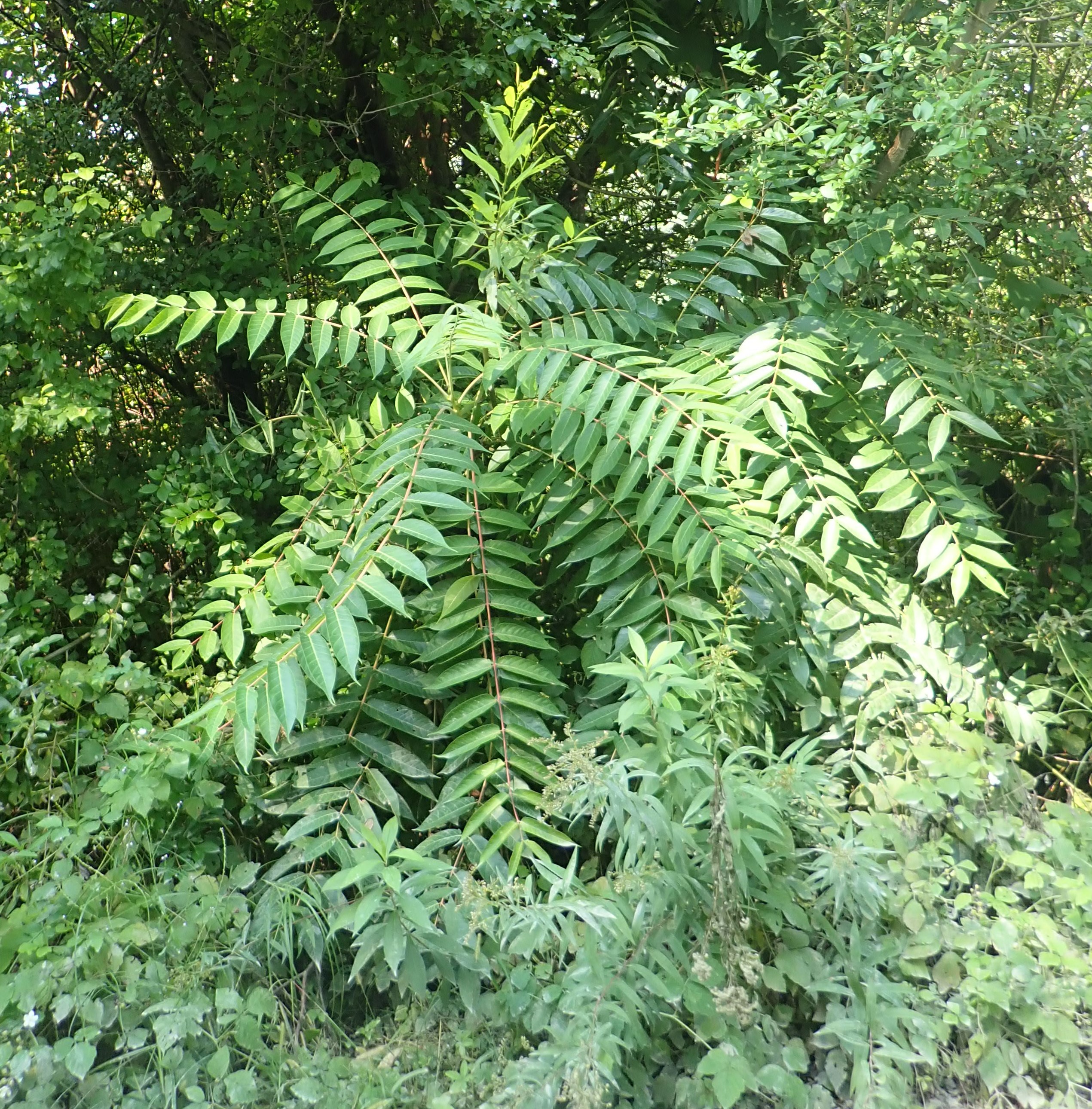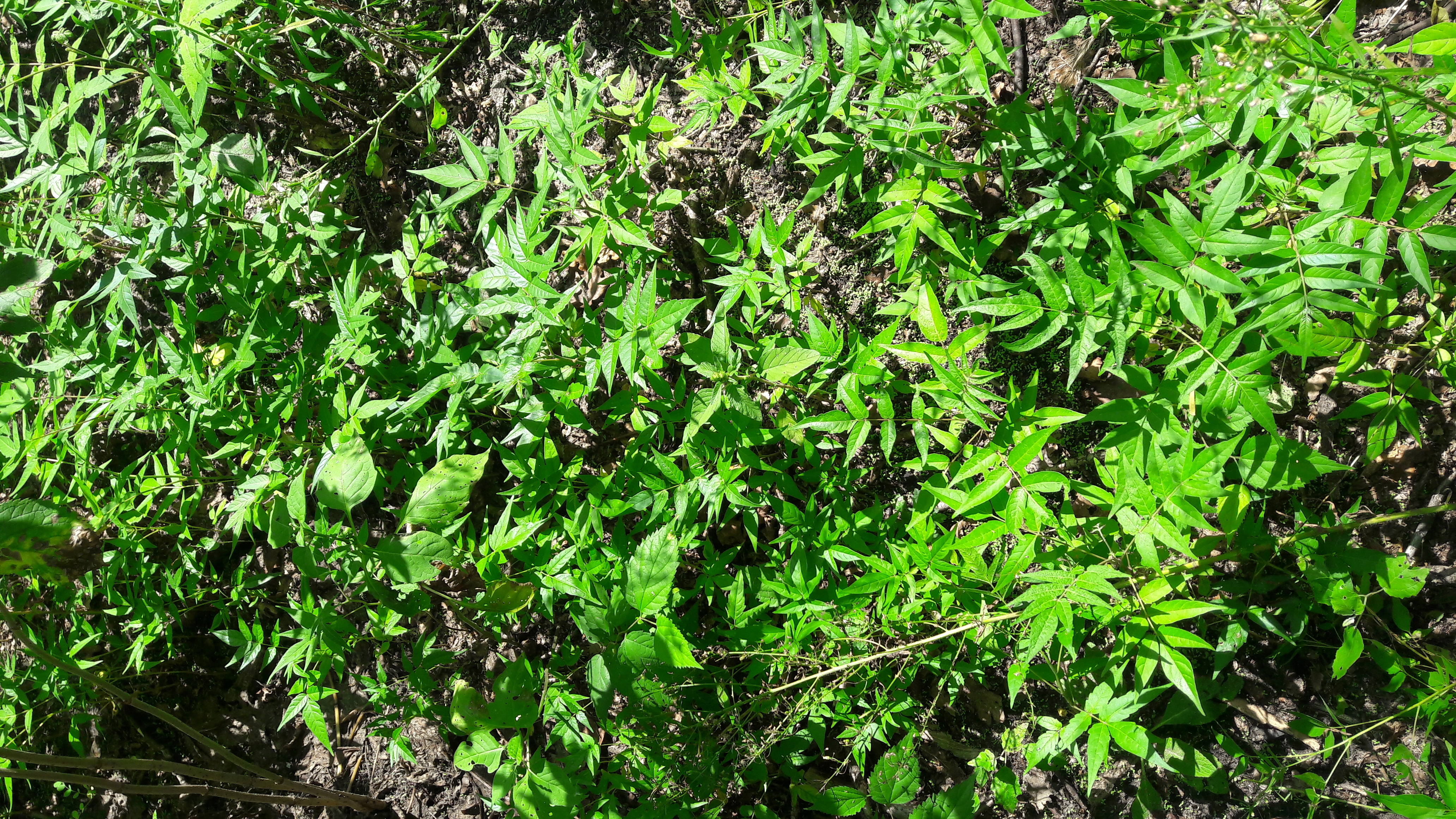Sava TIES - GET TO KNOW THE INVASIVE ALIEN PLANTS - Tree of heaven
30-07-2020
Ailanthus altissima, commonly known as tree of heaven, ailanthus or varnish tree is tree with odd-pinnately compound leaves. It is native to northern and central China where it is used in traditional medicine. It is also a host tree to one of species of silk moth and a popular park tree, valued for its resilience. People living near the lower Yellow River (Huang He) call it chunshu, meaning "the spring tree". The name stems from the fact that A. altissima is one of the last trees to come out of dormancy, and as such, the unfurling ofits leaves indicates that winter was truly over. It has some similarities with genus Fraxinus, native to Europe, especially with Fraxinus excelsior, but they can be distinguished by numbers of compounds in their leaves. Fraxinus rarely have more than 11 while Ailanthus commonly has more than 17.
It was one of the first species brought from China to the West. It arrived to Europe in 1751 and shortly became popular park tree. However, enthusiasm soon waned after gardeners became familiar with its suckering habits and its foul odor. Its pollen can be allergenic, contact with skin can cause rash and may also cause inflammation of heart muscle. Despite this, it was used extensively as a street tree during most of the 19th century. In many countries, including Slovenia, it rapidly spread due to its resilience and pH- and drought-tolerance. It can be found on extremely poor, degraded habitats, is adaptable to a very wide range of soil conditions and pH values. It is drought-hardy. Ailanthus is among the most pollution-tolerant of tree species, including sulfur dioxide, which it absorbs in its leaves. It resists ozone exposure relatively well. High concentrations of mercury have been found built up in tissues of the plant.

Ailanthus altissima (Photo: A. Tratnik)
There is one more factor responsible for its successfulness in inhabiting habits - Ailanthus contains toxin called ailanthone, which inhibits the growth of competitive plants.
These allelopathic chemicals are strongest in the bark and roots, but are also present in the leaves, wood and seeds of the plant. The chemical does not, however, affect the tree of heaven's own seedlings, indicating that A. altissima has a defense mechanism to prevent autotoxicity.
Ailanthus altissima grows exceptionally fast. In its first four years of life it grows on average 1-2 meters annually, thus rapidly shading ground beneath itself, which makes difficult for other trees to grow. Older trees, while growing much slower, still do so faster than other trees. Studies have shown a female tree can produce up to 300 000 seeds annually. If cut it is re-sprouting rapidly.
All these factors result in Ailanthus altissima forming dense forest stands where other species don't grow thus significantly impacting local biotic biodiversity.
The tree didn't only take roots in ground, but as well in culture of environment where it grows. The 1943 book A Tree Grows in Brooklyn by Betty Smith has the tree of heaven as its central metaphor, using it as an analogy for the ability to thrive in a difficult environment. ''It is the only tree that grows out of cement. It grows lushly...survives without sun, water, and seemingly earth. It would be considered beautiful except that there are too many of it.''
Due to significantly negative effect of Ailanthus altissima on biodiversity it was added to List of Invasive Alien Species of Union concern. The species included on the Union list are subject to restrictions and measures set out in the Regulation. These include restrictions on keeping, importing, selling, breeding and growing.

Ailanthus altissima (Photo: A. Tratnik)
News in national languages:
Croatia - Zeleni prsten Public Institution of Zagreb County or Lonjsko Polje Nature Park Public Institution
Slovenia - Public Institution Ljubljansko barje Nature Park
Bosnia and Herzegovina - Center for Environment or Public Company National Park "Una"
Serbia - Institute for Nature Conservation of Vojvodina Province or Nature Conservation Movement Sremska Mitrovica or Public Enterprise „Vojvodinašume“
Germany - EuroNatur
